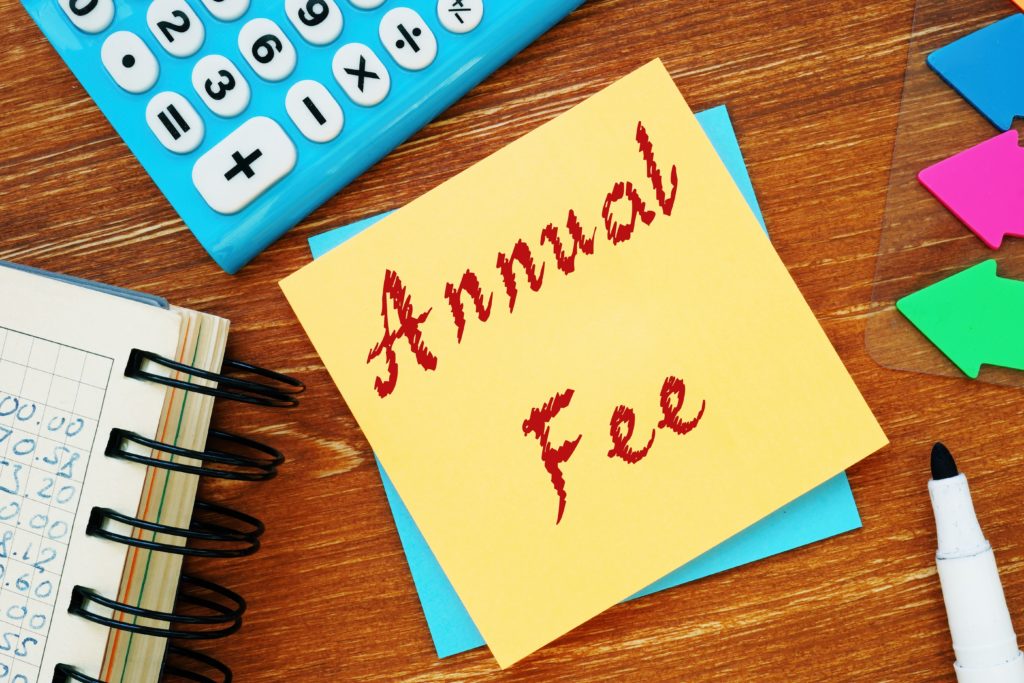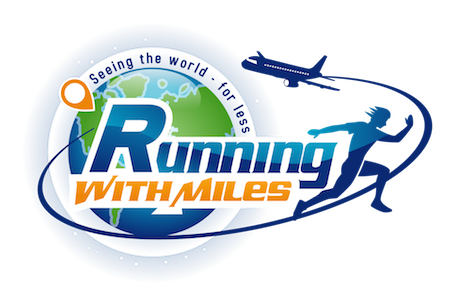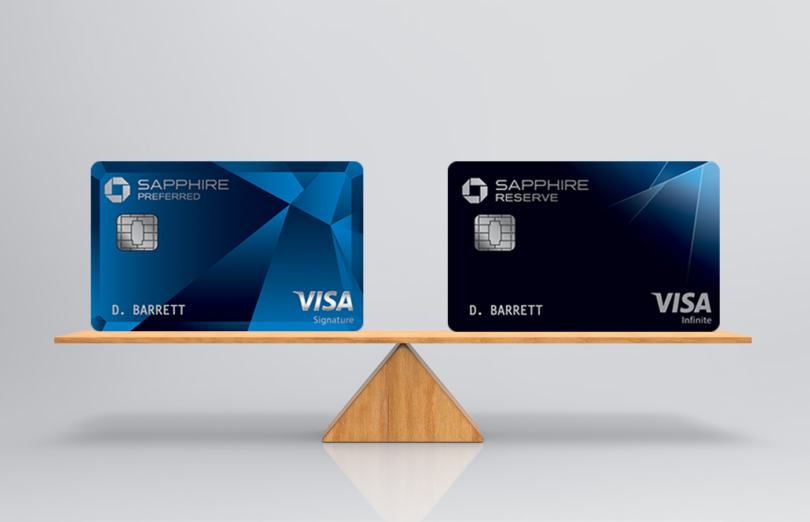With both Chase Sapphire cards having new sign-up bonuses and only being able to choose one, which card should you get? Let’s break down and compare the Chase Sapphire Preferred vs the Chase Sapphire Reserve!
Chase Sapphire Preferred vs Chase Sapphire Reserve
Links: Chase Sapphire Reserve ($550 annual fee) | Chase Sapphire Preferred ($95 annual fee)
I am an affiliate so may earn a commission if you apply through my links and are approved – thanks for supporting the site!
Let’s cut to the “chase” right away – the decision can be summed up quite easily by answering this question: how much do you travel? If you travel a lot and would benefit from lounge access and easily spend over $300 per year in travel, you can make a good case for the Chase Sapphire Reserve and its $550 annual fee. But, for most people, the best card to get is the Chase Sapphire Preferred with its $95 annual fee – especially since they offer the same amount of points in the bonus.
The reason all of this matters is because you cannot get either one if you have received a bonus on one of them in the last 48 months so it definitely makes a difference to make sure you choose the right one now!
Comparing Sign-Up Bonuses
The Chase Sapphire Preferred comes with the 75,000 points after spending $4,000 in the first 3 months. That is worth $750 in value if you Pay Yourself Back in certain categories or $937 if you book travel through Chase. You can also transfer them to travel partners at 1:1.
The Chase Sapphire Reserve comes the same bonus of 75,000 points after spending $4,000 in the first 3 months. This bonus is actually worth $937 if you do Pay Yourself Back or $1,125 if you book travel through Chase. The reason for the better value on points is because the Chase Sapphire Reserve gives you 50% additional value on points while the Chase Sapphire Preferred gives you 25% additional value. The points earned from the Reserve also transfer to travel partners at 1:1.
Comparing Earning Rates
Both cards have the same bonus categories – dining and travel. Here is how they both shake out in terms of that earning.
The Chase Sapphire Reserve will earn you 5X points on flights when you book through the Chase travel site and 10X points on hotels and car rentals when booked through Chase. If you decide to book travel on your own through the travel providers themselves, you will earn 3X points. For dining, you will earn 3X points on dining purchases and 10X points on dining purchases through the Chase Ultimate Rewards program.
Through 03/2025, you will also earn 10X points on Lyft rides. Finally, on all other purchases, you will earn a flat 1X point per dollar.
For the Chase Sapphire Preferred, you will earn 5X points on travel purchases made through Chase and 2X points on all other travel purchases. You will earn 3X on all dining purchases as well as on online grocery purchases (excluding Target, Walmart, and wholesale clubs). You will also earn 3X points on select streaming services. For Lyft through 03/2025, you will earn 5X points. And, finally, you will earn 1X point per dollar on all other purchases.
In addition, the Chase Sapphire Preferred will give you an annual 10% bonus on the points earned through the year. So, if you earn 50,000 points on your spending through the year, you will get a nice 5,000 point bonus at the end of your cardmember year.
If you are a heavy spender in one or both of those categories, there are other cards that can actually give you better rates on each. But, if you want it in a simple, one-card solution, one of these Chase cards will work just fine. If you were to spend $5,000 in these categories each year, you would earn an extra 1,000 points with the Chase Sapphire Reserve over the Preferred, worth at least $15.
Comparing Perks

close-up of seats, tables and tablets in an airport waiting lounge
The Chase Sapphire Preferred is a great entry-level travel rewards card so it does not have much in the way of travel perks. It does have primary rental car insurance, which is nice if you want to rent a car and there is some incident and you don’t want your own insurance to take care of it. The Preferred also gives you a $50 hotel credit for stays purchased through Chase Travel – every year. The Reserve does not offer that.
The Chase Sapphire Preferred also comes with DoorDash perks that include a $0 delivery fee and reduced service fees on orders over $12 for a minimum of one year on qualifying food purchases with DashPass.
You will also get Instacart+ for 6 months and will also get a $15 credit each quarter for purchases made through Instacart+. This adds up to $60 in value from the Instacart credits.
Between the Instcart credits and the hotel credit, you can easily get back your $95 each year for the annual fee.
The Chase Sapphire Reserve takes these perks and pumps them up significantly. With DoorDash, you get the DashPass subscription along with up to $60 in statement credits on purchases made through December 31, 2024. For Lyft, you get a complimentary Lyft Pink membership – a $199 minimum value.
On the Instacart side, you will get 12 months of Instacart+ as well as $15 back in statement credits each month. This will add up to $180 per year (we use it for pickup at stores where the prices are the same through Instacart as in the store – on things we would buy anyway).
When it comes to travel perks, you get Global Entry/TSA Precheck reimbursement, a complimentary Priority Pass lounge membership (free lounge visits for you and two guests), and $300 in travel credit on purchases made (which include dining and gas through the end of the year).
The Chase Sapphire Reserve comes with much better perks, especially if you travel.
Comparing Annual Fees

Business concept about Annual Fee with inscription on the piece of paper.
The Chase Sapphire Preferred comes with a $95 annual fee up front. The Chase Sapphire Reserve comes with a $550 annual fee up front.
That is a $455 difference in annual fees but it is not as easy as that. To start, the Chase Sapphire Preferred will give you a $50 statement credit on hotels. That brings the difference to more like $505 in overall cost/value difference.
But, we will take it further since you get $300 in travel/grocery/gas credit on the Chase Sapphire Reserve. That brings the difference down to $205.
If you value the various memberships (like Instacart, Lyft, DoorDash), the Chase Sapphire Reserve comes out ahead. But, for most of us, you can find some value in that but you are not going to look at those perks as cash.
Instead, the final thing we will look at is the points and their value. The Chase Sapphire Reserve gives you 50% extra value on points redemption while the Chase Sapphire Preferred gives you 25% extra value. If you do not transfer your points to travel partners but use them to book travel, the break even point on the annual fee difference (the straight difference of $455, not counting the other credits), you would need to redeem 180,000 points in a year to make the Chase Sapphire Reserve pay for itself in the extra value of the redemption.
So, Which Card to Choose?
Now it may all look a bit more complicated after breaking it all down! I mean, if you start with the basic question of what do you value more, points or perks, that sounds easy enough! But, there are a lot of ways to make the Chase Sapphire Reserve pay for itself.
My recommendation is to get the Chase Sapphire Preferred and then upgrade to the Chase Sapphire Reserve next year. Since the annual fee would change, you need to wait at least 12 months after signing up before upgrading but by doing it this way, you would get the 75,000 points of the CSP but then trade up to the CSR next year when travel is likely to be way back to what we may consider normal. Best of both worlds, if you want both the points and the perks. Plus, this gives you a year to evaluate and see what kind of value you get from the Chase Sapphire family.







